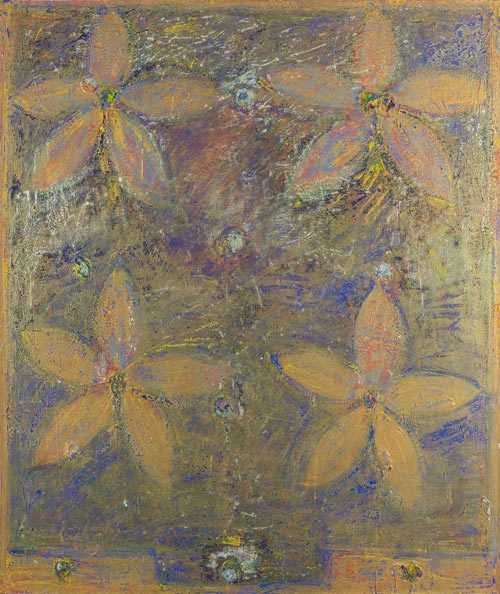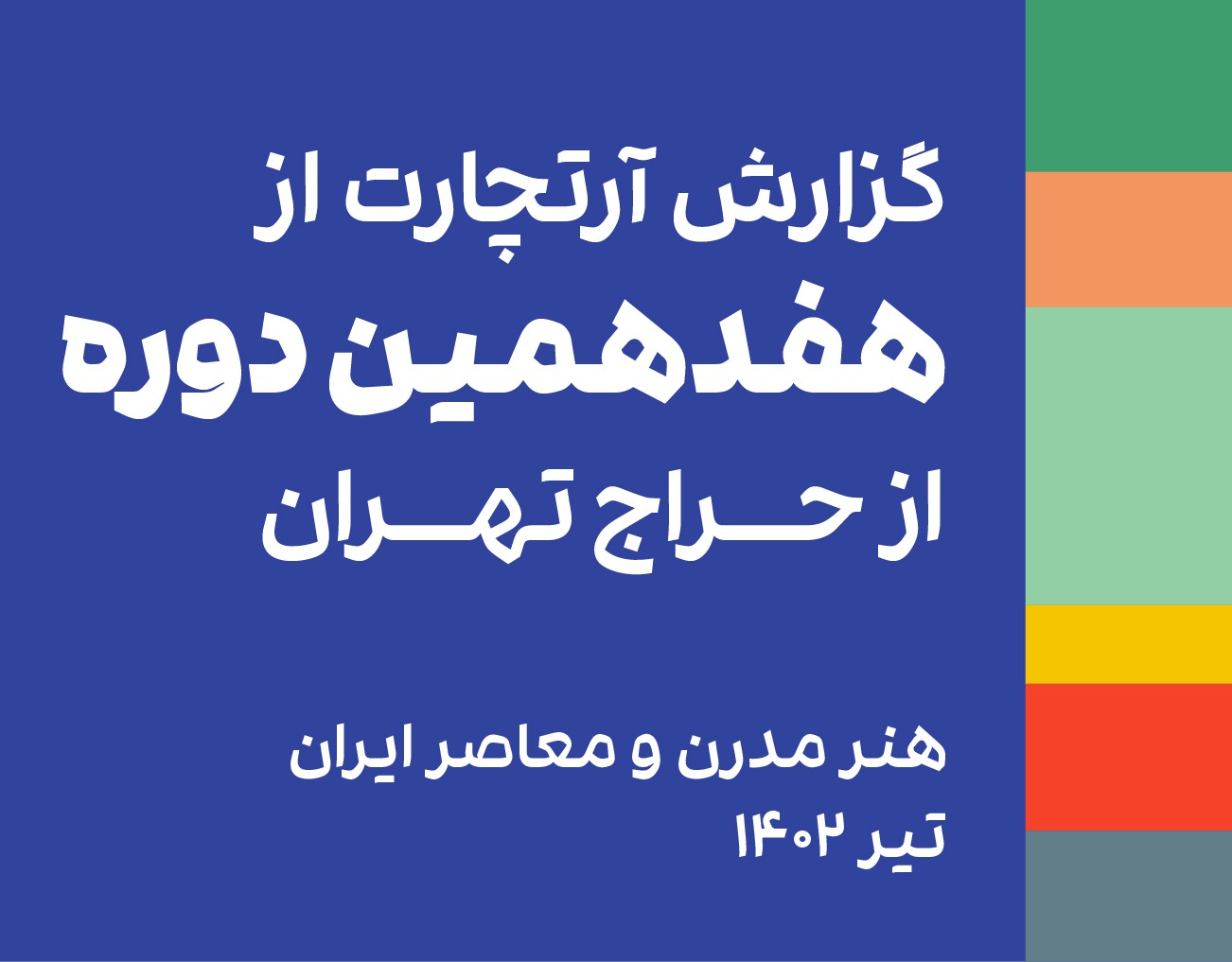About Homayoun Salimi
Homayoun Salimi is one of the modernist Iranian artists and is known for his abstract paintings. He has also been active in the Iranian university as an art teacher. Salimi entered Tabriz Fine Arts Conservatory in 1965. Three years after graduating, he went to France to study painting at the Beaux-Arts de Paris. After graduating with a master's degree in aesthetics and his Phd in aesthetics from the Sorbonne University in 1990, he returned to Iran and began his educational activities as a member of the faculty of Tehran University of Arts. His first solo exhibition was held at the Niavaran Cultural Center, and after that his works have been exhibited in numerous solo and group work views inside and outside Iran.
The first period of Salimi's paintings had an atmosphere close to painting, but gradually, under the influence of Iranian architectural features, it shifted to pure geometric abstraction. "The three principles, harmony, balance and simplicity in my view, are the ideal aesthetic elements that I try to achieve by seeking a completely free and liberated environment, and through this I reach peace.”
This harmony is created through the repetition of geometric rhythms, rhombic forms, stars, rectangles and squares, and the overall composition. His skill in the use of acrylic and his handling of this pigment prevent the dominance of the geometric basis of composition and give his paintings a dynamic character. He skillfully uses textures of color wash, coloring and rubbing, and allows results from pigments to happen.
Behnam Kamrani writes on the occasion of the exhibition of the private collection of Boom Gallery: "Pattern and texture play an essential role in the works of Homayoun Salimi] ....[arrangement and anarchy has some poetic aspects and the surface of paintings are embossed and colorful like embroidered beads and Pateh."
Farshid Maleki wrote about Salimi's first solo exhibition: "At night, when we pass through the streets and alleys, we suddenly come across windows that, with the special light that emanates from them, oblige us to express the peace and emotion that flows beyond them. "Salimi's work reminds me of such moments."
The first period of Salimi's paintings had an atmosphere close to painting, but gradually, under the influence of Iranian architectural features, it shifted to pure geometric abstraction. "The three principles, harmony, balance and simplicity in my view, are the ideal aesthetic elements that I try to achieve by seeking a completely free and liberated environment, and through this I reach peace.”
This harmony is created through the repetition of geometric rhythms, rhombic forms, stars, rectangles and squares, and the overall composition. His skill in the use of acrylic and his handling of this pigment prevent the dominance of the geometric basis of composition and give his paintings a dynamic character. He skillfully uses textures of color wash, coloring and rubbing, and allows results from pigments to happen.
Behnam Kamrani writes on the occasion of the exhibition of the private collection of Boom Gallery: "Pattern and texture play an essential role in the works of Homayoun Salimi] ....[arrangement and anarchy has some poetic aspects and the surface of paintings are embossed and colorful like embroidered beads and Pateh."
Farshid Maleki wrote about Salimi's first solo exhibition: "At night, when we pass through the streets and alleys, we suddenly come across windows that, with the special light that emanates from them, oblige us to express the peace and emotion that flows beyond them. "Salimi's work reminds me of such moments."
The Most Expensive Artwork
At Auctions
First Attendance
23 December 2016
# Attendance
9
# Artworks
9
Average Realized Price
7,437 USD
Average Min Estimate
5,385 USD
Average Max Estimate
7,352 USD
Sell-through Rate
100%
Average Growth of Artwork Worth
17.498%
Timeline
Artibition Auction - October 2025 auction
7 October
Charsoo exhibition
5 September
Fragments of Persian Modernity: Selected pieces from Iranian Modern and Contemporary Art exhibition
13 April
Annual 2025 exhibition
7 March
Renewed exhibition
7 March
Ornament exhibition
24 January
In Memory of Hadi Jamali 1 exhibition
1 November
Abstract Illusions exhibition
11 October
The 21st Tehran - Contemporary Iranian Art auction
11 October
Resize exhibition
16 August
A Collection exhibition
10 May
10s of Artworks, 10s of Millions exhibition
8 March
The 17th Tehran Modern and Contemporary Iranian Art auction
18 July
Didar with artists exhibition
14 April
Tehran- 16th- Iranian contemporary art auction
1 July
The Eighth Exhibition of Haftsamar Friends exhibition
24 June
Resize exhibition
13 May
Opportunity exhibition
13 February
The 15th Tehran- Modern Iranian Art auction
14 January
And Always Somewhere A Sign of Life exhibition
22 October
The 13th Tehran- Modern and Contemporary Iranian Art auction
15 January
Archive exhibition
21 August
Show and Sell of Works for the Benefit of Corona Patients exhibition
24 April
Shabtab 7 exhibition
14 February
دوازدهمین دوره حراج تهران auction
17 January
White Black Gray exhibition
13 December
Cama Chain exhibition
1 November
Up to 10 Million exhibition
8 February
Influence exhibition
9 November
PARIS-TEHRAN 1974-2018 / exhibition
5 October
هشتمین دوره حراج تهران auction
12 January
The 6th Tehran- Contemporary Iranian Art auction
23 December
Articles
۱7th Tehran Auction Sales Report 26 July 2023
The 17th Tehran auction: modern and contemporary, was held on Friday July 21st, 2023 at Parsian Azadi Hotel. This auction achieved a total sale of 214 billion tomans equivalent to 4.3 million dollars, which was a growth of 77.8% compared to the previous period. Artchart has observed the 17th Tehran auction in the upcoming report.

